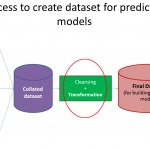With the existential threat that climate change poses to humanity, pursuing environmentally sustainable engineering has become an urgent imperative. Across energy, transportation, infrastructure and manufacturing, engineers are responding by integrating sustainability principles into design, construction, policy and daily operations. This article explores how sustainability concepts are transforming engineering to reduce ecological impact and enable a more climate-friendly built world.
What is Sustainability in Engineering?
The Environmental Protection Agency defines sustainability as “creating and maintaining the conditions under which humans and nature can exist in productive harmony to support present and future generations.”
For engineers, this means designing systems and processes that:
- Use resources efficiently with minimal waste
- Limit pollution and carbon emissions
- Are resilient and adaptive to change over time
- Account for full life-cycle impacts beyond just construction
- Protect and restore natural ecosystems
- Improve human living standards, health and happiness
Former civil engineer and sustainability professor David Riley says:
“Sustainable engineering goes beyond technical performance and cost to assess how infrastructure fundamentally allows all life to flourish into the deep future.”
Key Principles and Strategies
Various principles and strategies guide creation of more sustainable engineering:
Renewable Resources – Utilize renewable energy like solar, wind and tidal instead of finite fossil fuels wherever feasible.
Efficiency – Optimize energy, material and water use through conservation, reuse and improved processes.
Waste Minimization – Reduce waste generation via durable designs, repairability, modularization and recycling.
Symbiosis – Reclaim waste outputs from one process as inputs for another process.
Decarbonization – Phase out carbon-emitting processes and technologies with low or zero carbon alternatives.
Resilience – Design systems to withstand disruptions and adapt to changing conditions over time.
Cradle-to-Cradle – Consider the entire material lifecycle and afterlife when selecting materials and processes.
Systems Thinking – Adopt a broad perspective that accounts for interconnections and indirect impacts.
By integrating these mindsets into daily engineering tasks, sustainable outcomes emerge from the ground up.
Areas of Focus and Example Initiatives
Here are some domains where engineers are driving sustainability:
Green Buildings – Architecture and construction that minimizes resource use through passive solar, smart materials, renewable energy, and efficient electrical and HVAC systems.
Clean Transportation – Vehicle electrification, renewable fuels, improved batteries and power grids, efficient mass transit, and smart multi-mode transport.
Sustainable Manufacturing – Design for reduced material usage, recycled content, cleaner production methods, energy efficiency and closed-loop supply chains.
Renewable Energy – Wind, solar, geothermal and ocean power generation paired with grids and storage for 24/7 clean energy.
Resource Recovery – Reclaiming raw materials from waste streams including plastics, metals, glass, organics, wastewater and CO2.
Environmental Restoration – Leveraging ecosystems services and green engineering like constructed wetlands, bioremediation and soil rehabilitation to restore habitats.
Circular Economy – Closing loops across the technical and biological cycles through strategies like product-as-service models and industrial symbiosis.
Focusing engineering creativity on these high impact areas will enable broader systems transformation.
Tools and Methods for Sustainable Engineering
Specialized tools and methods allow engineers to evaluate and optimize the sustainability of designs:
-
Life Cycle Assessment – Quantify environmental impacts from raw material extraction through manufacturing, usage and end-of-life disposal. Identify improvement opportunities.
-
Sustainability Standards – Frameworks like LEED for buildings and products define sustainability criteria, metrics and processes.
-
Whole Systems Analysis – Combine evaluation of technical, environmental, social and economic factors over the complete life cycle.
-
Simulation and Modeling – Software models predict sustainability performance to allow virtual optimization before physical implementation.
-
Sustainable Materials Selection – Choose renewable, recycled, non-toxic, biodegradable and eco-friendly materials using selector tools.
-
Renewable Energy Modeling – Right size solar, wind and other renewable energy generation and storage capacity to match site-specific loads.
-
Waste & Energy Audits – Perform detailed audits and pinch analysis of current waste and energy flows in a facility to find savings potential.
Applying these environmental engineering methods critically examines the broader context beyond basic functionality.
Overcoming Challenges to Adoption
Several barriers can impede organizations from embracing sustainable engineering:
-
Habits and Culture – Resistance to changing existing paradigms and processes hinders innovation.
-
Short Term Thinking – Focus on immediate costs over long term TCO advantages discourages sustainability investments.
-
Lack of Standards – Few recognized standards exist for some emerging technologies like bioplastics. This slows adoption.
-
Split Incentives – Mismatched incentives between those making decisions and those impacted by sustainability aspects.
-
Greenwashing – Superficial green marketing creates skepticism over truly sustainable approaches.
-
Limited Research – Knowledge gaps around measuring and optimizing sustainability in advanced technologies like AI and robotics.
But persevering through these hurdles is imperative to realign engineering with ecological balance. As civil engineer Henry Petroski writes:
“Just as we learn to critique structural integrity, so must we develop the skills and ethics to critique sustainability, and refine all engineering accordingly.”
Through ingenuity and determination, engineers can surmount all obstacles and spearhead the sustainability revolution.
Conclusion
Creating an enduring human civilization requires transforming engineering to align with ecological limits and sustainability principles. From dramatically reducing emissions and waste across our infrastructures, to restoring ecosystems and developing circular economies, the engineering community is central to enabling this great transition. By harnessing renewable energy flows, optimizing efficiency, using materials responsibly and synthesizing the technical and natural worlds, we can upgrade our designed world to support human prosperity indefinitely. There are formidable challenges ahead, but also tremendous opportunities for engineers to innovate processes and technologies that allow civilization and the planet to flourish for generations to come.
















